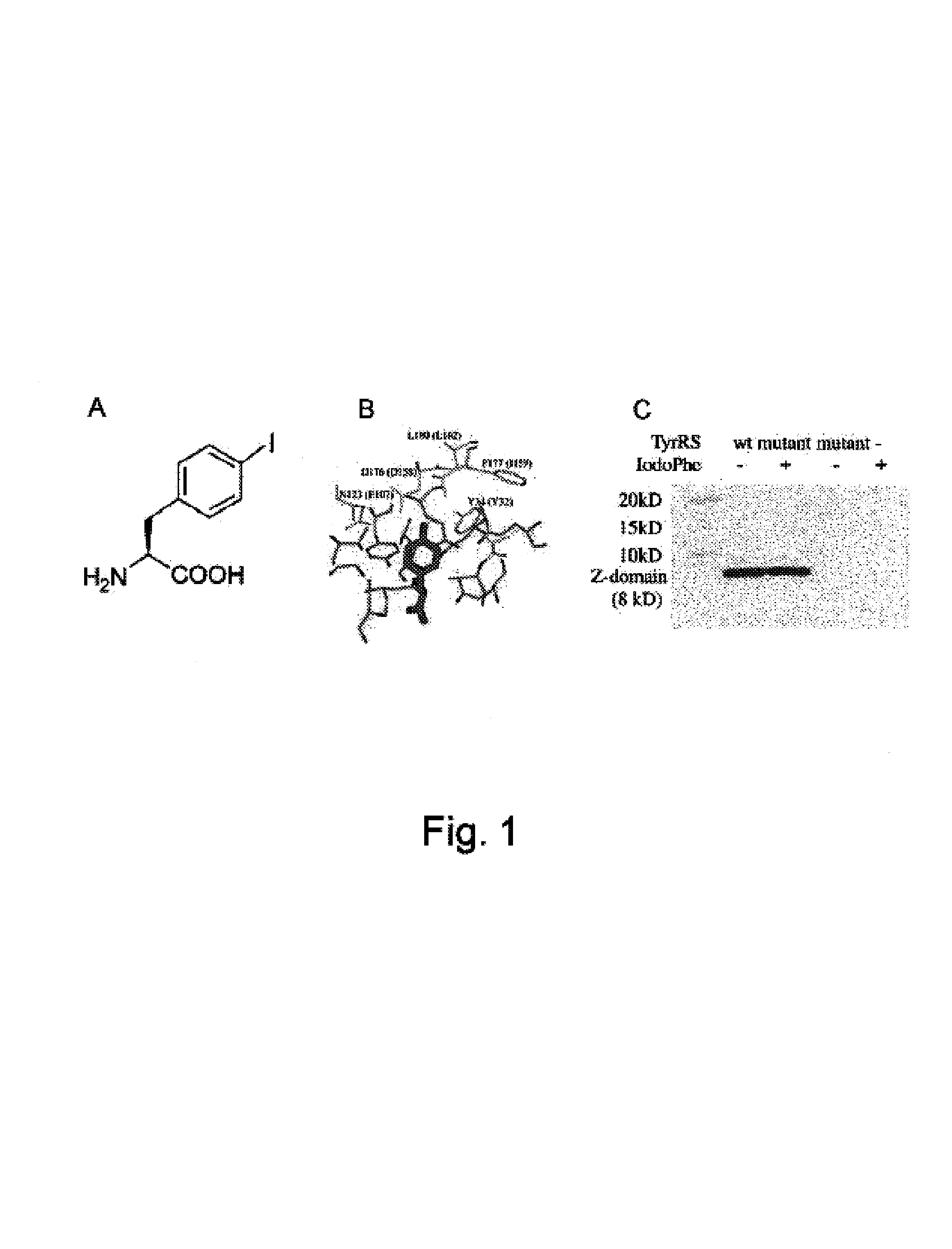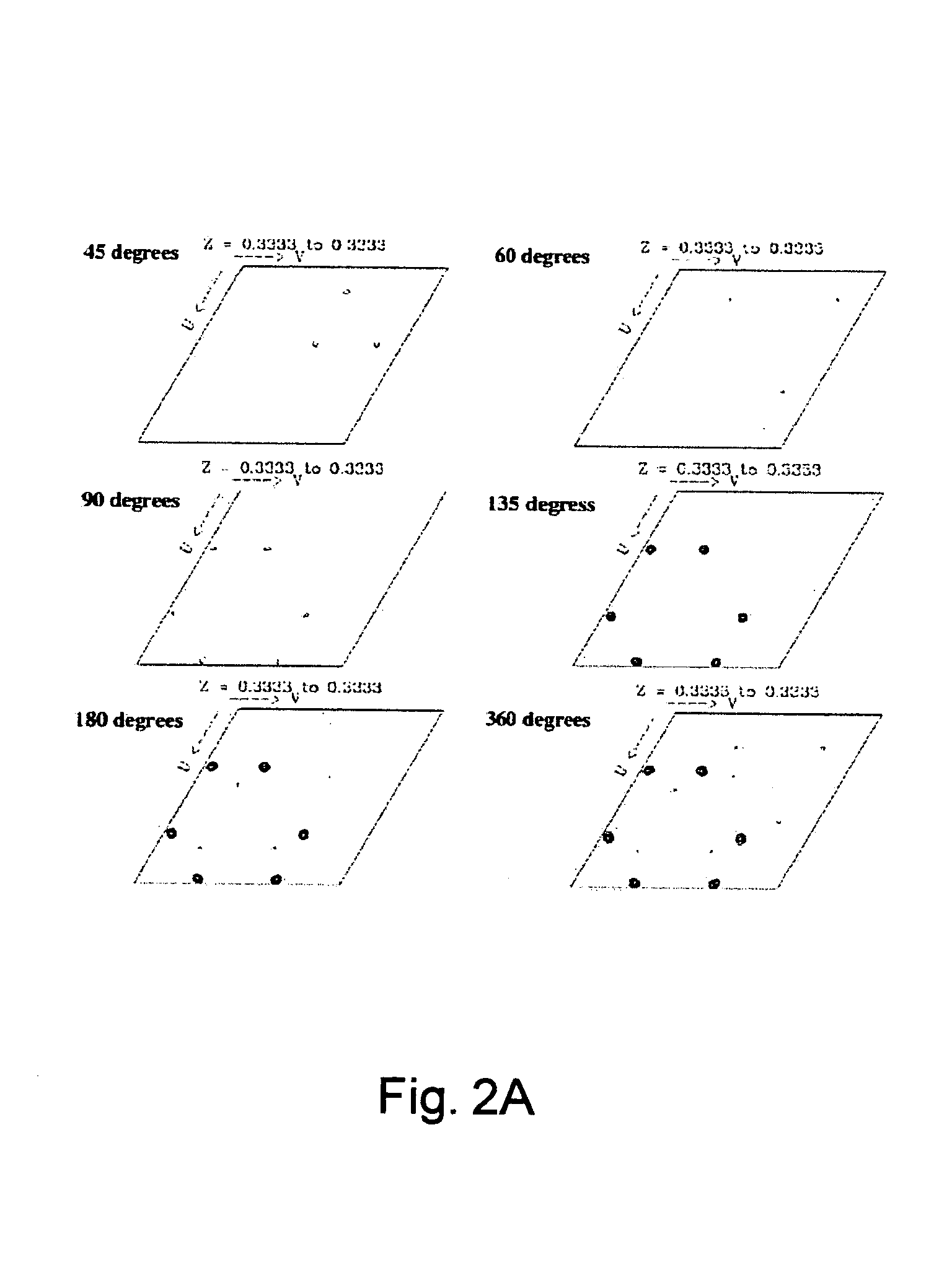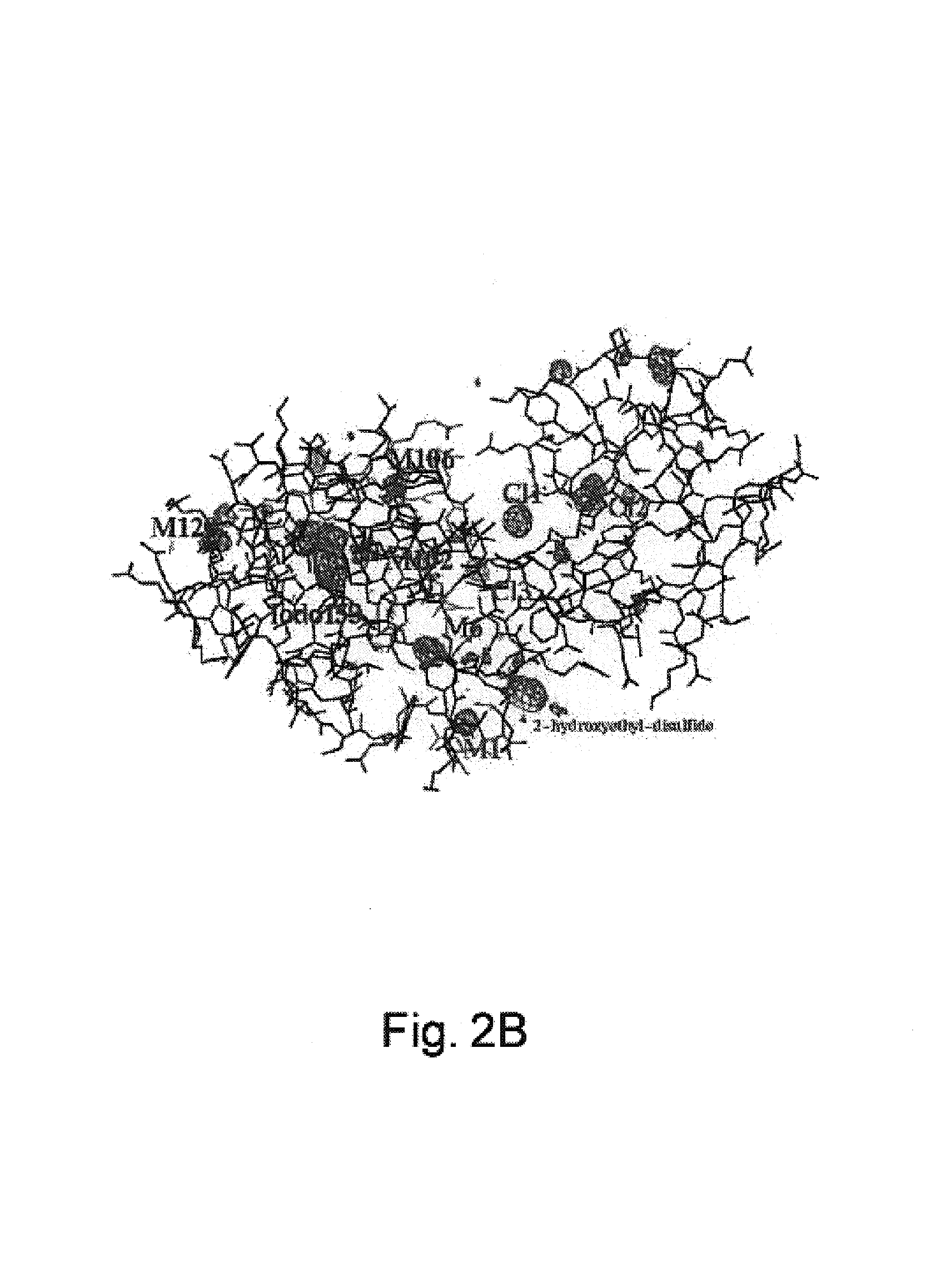Site specific incorporation of heavy atom-containing unnatural amino acids into proteins for structure determination
a protein and amino acid technology, applied in the field of translation biochemistry, can solve the problems of low occupancy site number, stringent need for highly redundant data, and difficulty in placing them at precise positions in proteins
- Summary
- Abstract
- Description
- Claims
- Application Information
AI Technical Summary
Benefits of technology
Problems solved by technology
Method used
Image
Examples
example 1
Production of Orthogonal Synthetase / tRNA Pair
[0214]To selectively incorporate iodoPhe (FIG. 1 Panel A) into proteins in response to an amber TAG codon, a Methanococcus jannaschii tRNACUATyr-TyrRS pair was constructed and used. This tRNA-synthetase pair is orthogonal to all tRNA-synthetase pairs in E. coli, i.e., neither the M. jannaschii tyrosyl tRNA nor the synthetase cross-reacts with any of the endogenous tRNA or synthetases in E. coli. This condition ensures that iodoPhe is incorporated into proteins with high translational fidelity. To alter the specificity of the TyrRS synthetase to selectively recognize iodoPhe, a library of M. jannaschii TyrRS mutants was generated by randomizing five residues (Tyr32, Glu107, Asp158, Ile159 and Leu162) in the tyrosine binding pocket of TyrRS (FIG. 1 Panel B), based on the crystal structure of the homologous B. stearothermophilus TyrRS-tyrosyl adenylate complex (Brick et al. (1989) Structure of tyrosyl-tRNA synthetase refined at 2.3 A resolut...
example 2
iodoPhe Incorporation Enables Sad Phasing
[0217]The synthetases described in Example 1 can be used to efficiently and site-specifically incorporate p-iodo-L-phenylalanine (iodoPhe) into proteins in response to an amber TAG codon. The selective introduction of the anomalously scattering iodine atom into proteins should facilitate SAD experiments on in-house X-ray sources. To illustrate this, a Phe153→iodoPhe mutant of bacteriophage T4 lysozyme was generated and its crystal structure was successfully determined using considerably less data than for the equivalent experiment with cysteine and methionine. The iodoPhe residue, although present in the hydrophobic core of the protein, did not perturb the protein structure to any significant degree. The ability to selectively introduce this and other heavy atom containing amino acids into proteins will further facilitate the structural study of proteins.
[0218]To determine the utility of iodoPhe incorporation for SAD phasing in protein crysta...
PUM
| Property | Measurement | Unit |
|---|---|---|
| Tm | aaaaa | aaaaa |
| volume | aaaaa | aaaaa |
| chi1 angle | aaaaa | aaaaa |
Abstract
Description
Claims
Application Information
 Login to View More
Login to View More - R&D
- Intellectual Property
- Life Sciences
- Materials
- Tech Scout
- Unparalleled Data Quality
- Higher Quality Content
- 60% Fewer Hallucinations
Browse by: Latest US Patents, China's latest patents, Technical Efficacy Thesaurus, Application Domain, Technology Topic, Popular Technical Reports.
© 2025 PatSnap. All rights reserved.Legal|Privacy policy|Modern Slavery Act Transparency Statement|Sitemap|About US| Contact US: help@patsnap.com



